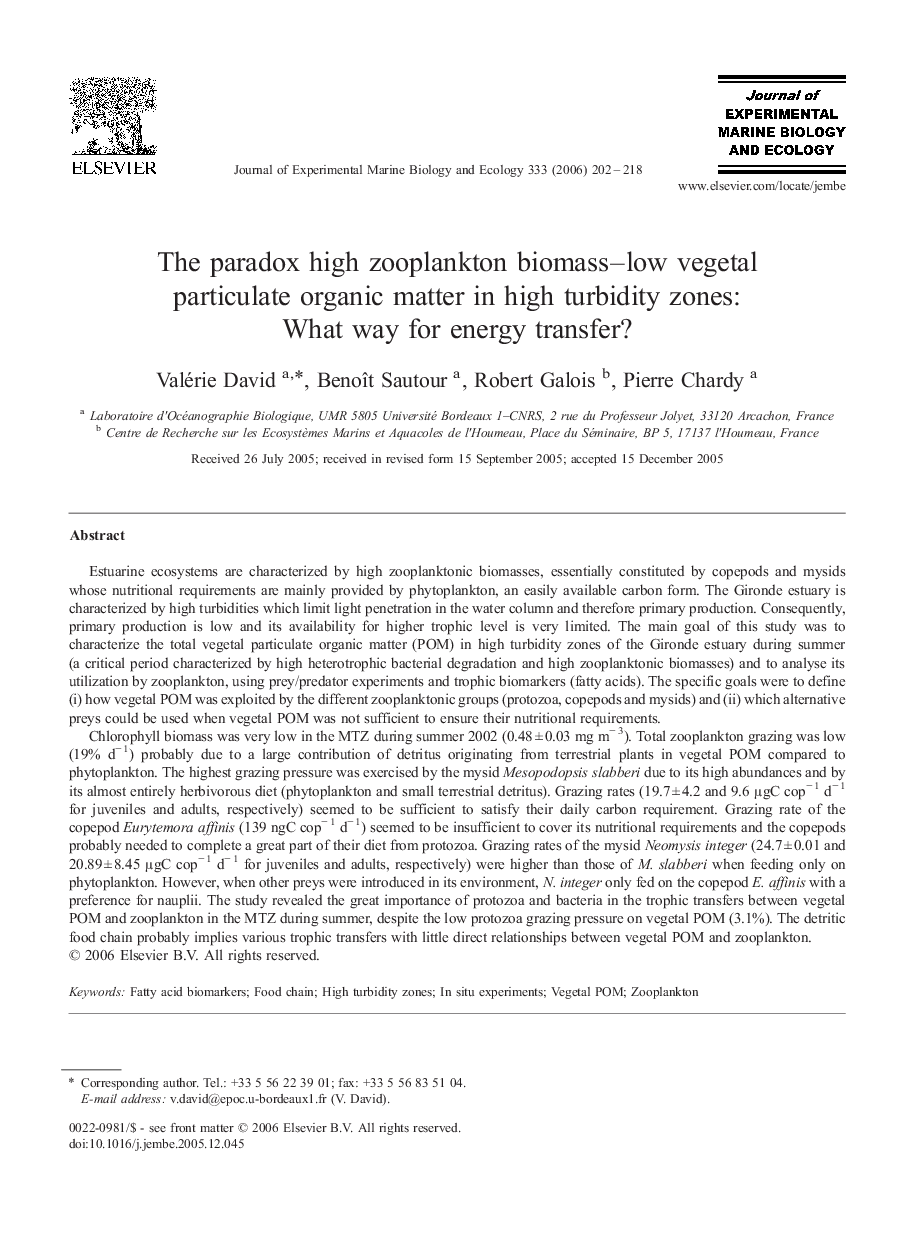| کد مقاله | کد نشریه | سال انتشار | مقاله انگلیسی | نسخه تمام متن |
|---|---|---|---|---|
| 4398115 | 1305926 | 2006 | 17 صفحه PDF | دانلود رایگان |
عنوان انگلیسی مقاله ISI
The paradox high zooplankton biomass-low vegetal particulate organic matter in high turbidity zones: What way for energy transfer?
دانلود مقاله + سفارش ترجمه
دانلود مقاله ISI انگلیسی
رایگان برای ایرانیان
کلمات کلیدی
موضوعات مرتبط
علوم زیستی و بیوفناوری
علوم کشاورزی و بیولوژیک
علوم آبزیان
پیش نمایش صفحه اول مقاله

چکیده انگلیسی
Chlorophyll biomass was very low in the MTZ during summer 2002 (0.48 ± 0.03 mg mâ 3). Total zooplankton grazing was low (19% dâ 1) probably due to a large contribution of detritus originating from terrestrial plants in vegetal POM compared to phytoplankton. The highest grazing pressure was exercised by the mysid Mesopodopsis slabberi due to its high abundances and by its almost entirely herbivorous diet (phytoplankton and small terrestrial detritus). Grazing rates (19.7 ± 4.2 and 9.6 μgC copâ 1 dâ 1 for juveniles and adults, respectively) seemed to be sufficient to satisfy their daily carbon requirement. Grazing rate of the copepod Eurytemora affinis (139 ngC copâ 1 dâ 1) seemed to be insufficient to cover its nutritional requirements and the copepods probably needed to complete a great part of their diet from protozoa. Grazing rates of the mysid Neomysis integer (24.7 ± 0.01 and 20.89 ± 8.45 μgC copâ 1 dâ 1 for juveniles and adults, respectively) were higher than those of M. slabberi when feeding only on phytoplankton. However, when other preys were introduced in its environment, N. integer only fed on the copepod E. affinis with a preference for nauplii. The study revealed the great importance of protozoa and bacteria in the trophic transfers between vegetal POM and zooplankton in the MTZ during summer, despite the low protozoa grazing pressure on vegetal POM (3.1%). The detritic food chain probably implies various trophic transfers with little direct relationships between vegetal POM and zooplankton.
ناشر
Database: Elsevier - ScienceDirect (ساینس دایرکت)
Journal: Journal of Experimental Marine Biology and Ecology - Volume 333, Issue 2, 13 June 2006, Pages 202-218
Journal: Journal of Experimental Marine Biology and Ecology - Volume 333, Issue 2, 13 June 2006, Pages 202-218
نویسندگان
Valérie David, Benoît Sautour, Robert Galois, Pierre Chardy,